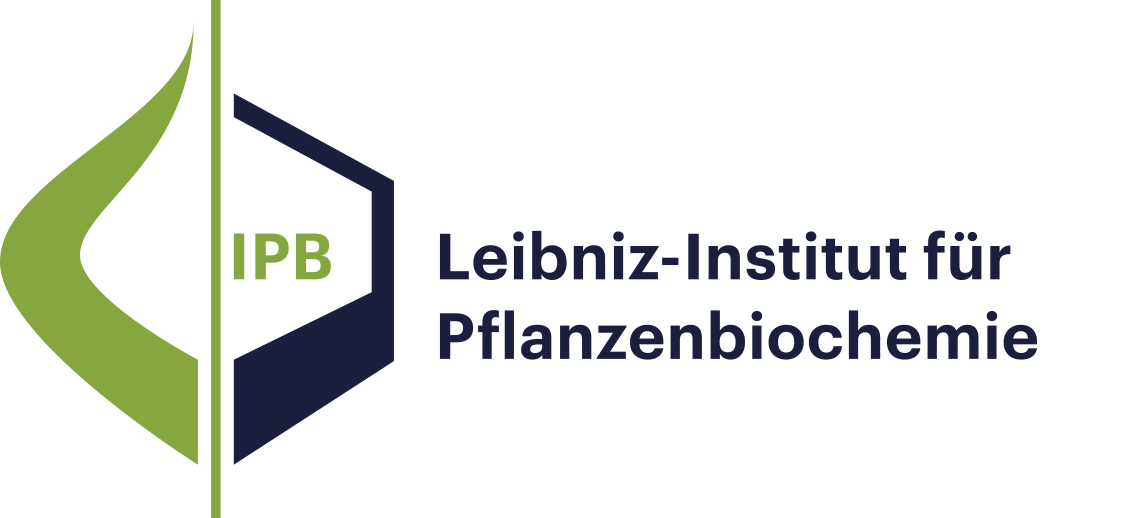Publikationen - Molekulare Signalverarbeitung
- Ergebnisse als:
- Druckansicht
- Endnote (RIS)
- BibTeX
- Tabelle: CSV | HTML
Publikation
Publikation
Publikation
Diese Seite wurde zuletzt am 15 Aug 2012 geändert.
Leitbild und Forschungsprofil
Molekulare Signalverarbeitung
Natur- und Wirkstoffchemie
Biochemie pflanzlicher Interaktionen
Stoffwechsel- und Zellbiologie
Unabhängige Nachwuchsgruppen
Program Center MetaCom
Publikationen
Gute Wissenschaftliche Praxis
Forschungsförderung
Netzwerke und Verbundprojekte
Symposien und Kolloquien
Alumni-Forschungsgruppen
Publikationen
Publikationen - Molekulare Signalverarbeitung
Publikation
Jasmonic acid (JA) and its derivatives are well‐characterized signaling molecules in plant defense and development, but the site of their localization within plant tissue is entirely unknown. To address the question whether applied JA accumulates extracellularly or intracellularly, leaves of tomato and barley were fed with 14C‐labeled JA and the label was localized in cryofixed and lyophilized leaf tissues by microautoradiography. In tomato the radioactivity was detectable within the apoplast, but no label was found within the mesophyll cells. By contrast, in barley leaf tissues, radioactivity was detected within the mesophyll cells suggesting a cellular uptake of exogenously applied JA. JA, applied to leaves of both plants as in the labeling experiments, led in all leaf cells to the expression of JA‐inducible genes indicating that the perception is completed by JA signal transduction.
Publikation
From a cDNA library generated from mRNA of white leaf tissues of the ribosome‐deficient mutant ‘albostrians' of barley (Hordeum vulgare cv. Haisa) a cDNA was isolated carrying 54.2% identity to a recently published cDNA which codes for the diadenosine‐5′,5′′′‐P1,P4‐tetraphosphate (Ap4A) hydrolase of Lupinus angustifolius (Maksel et al. (1998) Biochem. J. 329, 313–319), and 69% identity to four partial peptide sequences of Ap4A hydrolase of tomato. Overexpression in Escherichia coli revealed a protein of about 19 kDa, which exhibited Ap4A hydrolase activity and cross‐reactivity with an antibody raised against a purified tomato Ap4A hydrolase (Feussner et al. (1996) Z. Naturforsch. 51c, 477–486). Expression studies showed an mRNA accumulation in all organs of a barley seedling. Possible functions of Ap4A hydrolase in plants will be discussed.
Publikation
Leaves of barley (Hordeum vulgare L. cv. Salome ) treated with jasmonic acid (JA), its methyl ester (JM), or its amino acid conjugates exhibit up‐regulation of specific genes and down‐regulation of house‐keeping genes. This transcriptional regulation exhibits several specificities. (i) The (−)‐enantiomers are more active, and conjugates are mainly active if they carry an l ‐amino acid moiety. (ii) The various JA‐responsive genes respond differentially to enantiomeric and chiralic forms. (iii) Both JA and its amino acid conjugates exhibiting no or negligible interconversion induce/repress genes.
Diese Seite wurde zuletzt am 15 Aug 2012 geändert.

